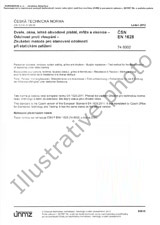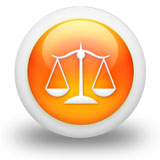We need your consent to use the individual data so that you can see information about your interests, among other things. Click "OK" to give your consent.
ČSN ETSI EN 301649-V2.3.1 (875532)
Digital Enhanced Cordless Telecommunications (DECT); DECT Packet Radio Service (DPRS)
Automatically translated name:
Digital Enhanced Cordless Telecommunications ( DECT) - DECT Packet Radio Service ( DPRS ) ( standard for direct use as CSN ).
STANDARD published on 1.9.2015
The information about the standard:
Designation standards: ČSN ETSI EN 301649-V2.3.1
Classification mark: 875532
Catalog number: 98250
Publication date standards: 1.9.2015
SKU: NS-614218
The number of pages: 290
Approximate weight : 901 g (1.99 lbs)
Country: Czech technical standard
Category: Technical standards ČSN
The category - similar standards:
Annotation of standard text ČSN ETSI EN 301649-V2.3.1 (875532):
V2.3.1
The present document defines the standard for packet radio services for Digital Enhanced Cordless Telecommunications (DECT) systems conforming to ETSI EN 300 175-1 [1] to ETSI EN 300 175-8 [8]. It is the basis of profiles, which define more specific applications (Application Specific Access Profiles ASAPs), aimed at the connection of terminals supporting packet data services to a fixed infrastructure, both private and public.
DECT Packet Radio Service defines several operation modes, named Classes, and several transported services and protocols, that may be frame relay or character oriented.
" Class 1 does not use a network layer C-plane and provides a service similar to a Wireless Local Area Network.
" Class 2 implements full DPRS capabilities, including complete C-plane with call control and mobility management, and provides all capabilities of the packet service of public cellular networks (i.e. GPRS). Both services Class 1 and Class 2 support multiberaer and asymmetric connections, and implement Management Entity procedures intended to achieve maximum performance, optimal efficiency and minimal access times.
" Class 3 and Class 4 are simplified modes intended for auxiliary data services in voice terminals or other moderate rate data services.
The annexes to the present document contain the conventions for interworking of the frame-relay and character oriented services, as well as, other relevant information. The following services are defined in the present document:
Frame relay services:
- " LAN IEEE 802.3 [13] (also known as ISO/IEC 8802-3), (clause B.4).
- " LAN IEEE 802.5 [14] (also known as ISO/IEC 8802-5), (clause B.5).
- " Internet Protocol (IP) [15], (clause B.6).
- " Point to Point Protocol (PPP) [16], (clause B.7).
- " Generic interworking (clause B.8) that allows the direct transport of other protocols.
Character Oriented Services:
- " V.24 asynchronous interface, including a Packet Assembler and Disasembler (PAD) module (annex C).
The present document defines the additional requirements on the Physical Layer (PHL), Medium Access Control (MAC) layer, Data Link Control (DLC) layer and Network (NWK) layer of DECT. The standard also specifies Management Entity (ME) requirements, which ensure the efficient use of the DECT spectrum.
The present document includes New Generation DECT, a further development of the DECT standard introducing wideband speech, improved data services, new slot types and other technical enhancements
Preview of the standard ČSN ETSI EN 301649-V2.3.1 (875532)
We recommend:
Updating of laws
Do you want to be sure about the validity of used regulations?
We offer you a solution so that you could use valid and updated legislative regulations.
Would you like to get more information? Look at this page.




 Cookies
Cookies
